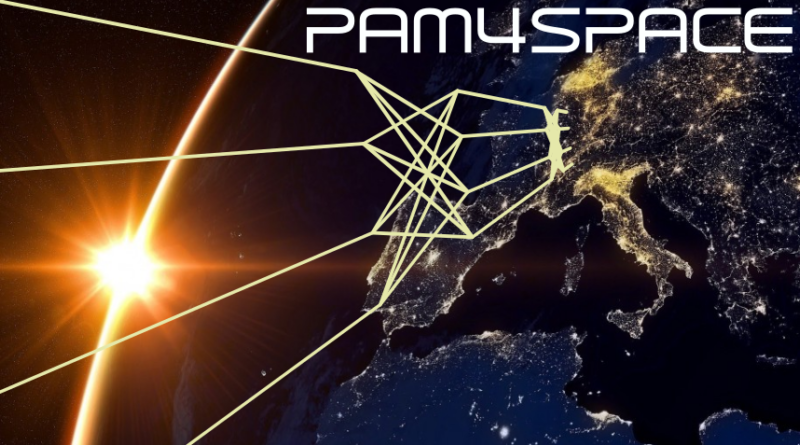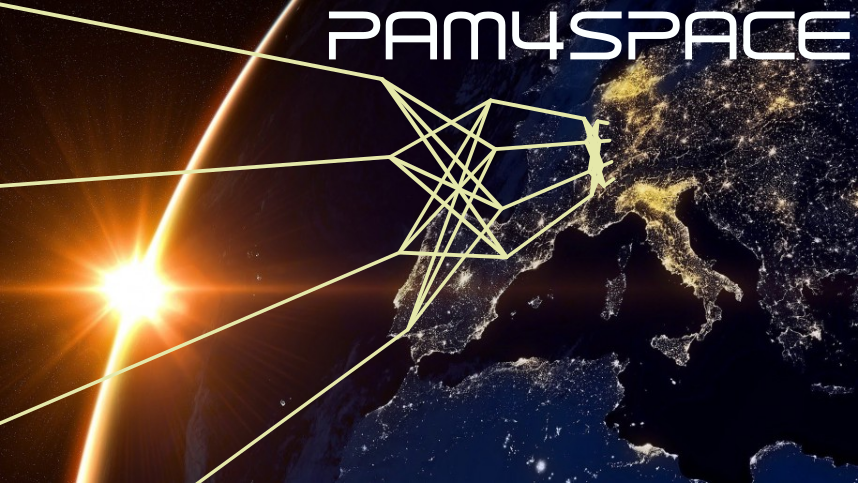Tetra Semiconductors to extend its PAM4 technology to space
Zurich, January 24, 2022
Data traffic within satellites, launchers and space stations is constantly growing as, for example, sensors and camera resolutions increase from generation to generation. Thus, new, faster, and more efficient (in terms of energy per transmitted bit) intra-satellite data transmission is required.
We are proud to announce that Tetra Semiconductors has been selected by ESA to develop a next-generation optical communication interface for intra satellite communications.
In recent years Tetra Semiconductors has developed chipsets compliant with the emerging 400Gbit/s Ethernet standards for the next generation of large data centers and ethernet switches. Tetra Semiconductors’ unique analog circuit architecture is capable of receiving, recovering and decoding multilevel signals and not only provides a competitive advantage with regards to power consumption, robustness and chip size, but is also very well suited for the radiation-hardened versions necessary for space applications. For these reasons, Tetra Semiconductors was asked to adapt its current 400Gbit/s Ethernet product TS2 for use in the space industry. On top of Tetra’s new CDR approach, the company has longstanding experience in designing optical frontends for obtaining the best possible link budget. These link margins are hard requirements in satellite communications as they extend the temperature range and operational lifetime of the products in space, where radiation accelerates ageing.
The target is to develop two derivatives of Tetra’s existing TS2 chipset, both for 53 Gbit/s per channel VCSEL-based interconnects. One derivative will contain radiation-hardened versions of the linear optical front-ends (without a CDR) optimized for the lowest possible power consumption targeted for use in short intra-satellite links. The other derivative of the TS2 will include both radiation-hardened optical front-ends and CDRs for longer link applications such as those seen in launchers or larger satellites.
With the development of these two chipsets, Tetra and ESA have partnered to increase the optical bandwidth in satellite systems while reducing power consumption, both increasingly crucial to the space industry.
Tetra Semiconductos acknowledges the support of and excellent collaboration with ESA and the Swiss Space office.
About Tetra
Tetra Semiconductors Ltd. is an independent fabless semiconductor manufacturer with a global presence. The company started its mission in 2016 with the goal to provide PAM4 chipsets for the datacom market. The core know-how of Tetra is designing and manufacturing chips for the electro-optical interface. All involved key people have a long track record supplying chips to cable manufacturers in the datacom industry as well as in consumer electronics (HDMI, USB, …).
About Artes
Satellite communications is the economic engine of the space industry, accounting for two thirds of overall space industry revenue. ESA’s programme of Advanced Research in Telecommunications Systems (ARTES) seeks to keep European and Canadian industry at the leading edge of this fiercely competitive global market by nurturing innovation.
About ESA
The European Space Agency (ESA) is an intergovernmental organization of 22 member states dedicated to the exploration of space. Established in 1975 and headquartered in Paris, ESA has a worldwide staff of about 2,200 in 2018. ESA’s space flight programme includes human spaceflight (mainly through participation in the International Space Station program); the launch and operation of unmanned exploration missions to other planets and the Moon; Earth observation, science and telecommunication; designing launch vehicles; and maintaining a major spaceport, the Guiana Space Centre at Kourou, French Guiana. The main European launch vehicle Ariane 5 is operated through Arianespace with ESA sharing in the costs of launching and further developing this launch vehicle. The agency is also working with NASA to manufacture the Orion Spacecraft service module that will fly on the Space Launch System.
For further information please visit www.tetra-semi.com or get in touch with us via email: info@tetra-semi.com.


